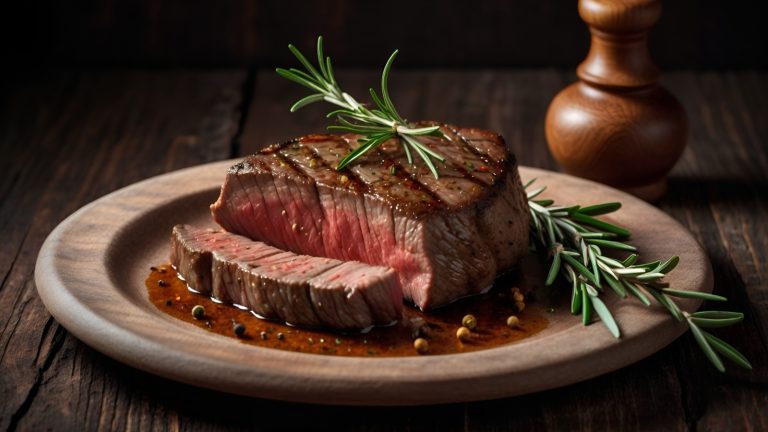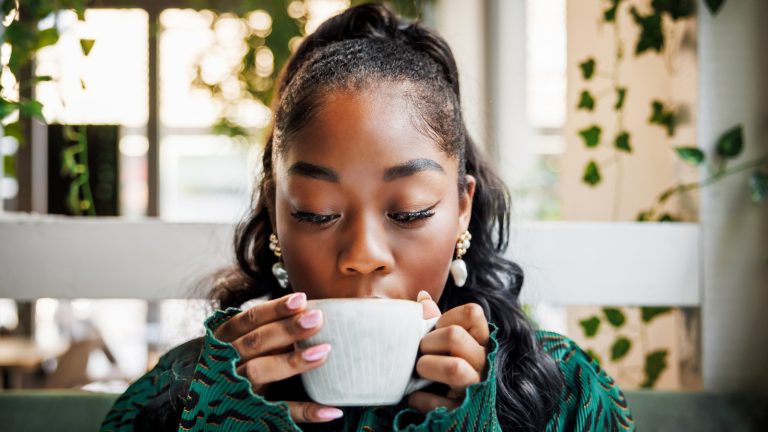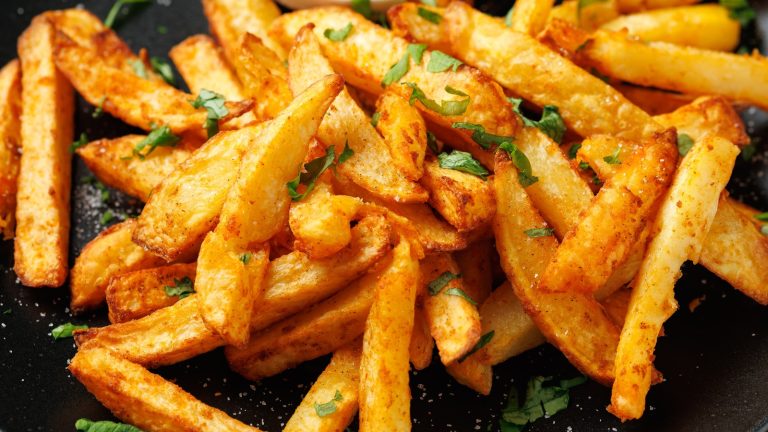Whether you’re basking in the last rays of a glorious sunset or settling into the velvety atmosphere of a dimly lit bar, cocktail hour is full of possibilities. And when that hour strikes, the question you must ask yourself — or better yet, your bartender — is what you’ll be sipping on. When it comes to choosing the perfect libation, few cocktails exude sophistication like the martini. Invented sometime in the late 1800s, its precise origins are a little cloudy. It seems likely that it developed from the Martinez (gin, sweet vermouth, maraschino liqueur, orange bitters) and the Manhattan (rye/whiskey, sweet vermouth, bitters).
Fast forward nearly a century and a half, the martini remains as iconic as ever, taking on countless forms along the way. While purists may argue that a true martini must include gin, dry vermouth, and an olive or lemon twist, modern cocktail culture has expanded the definition, embracing creative riffs on tradition. Some of those variations have stood the test of time better than others, and if you consider yourself a cocktail lover, you may already appreciate the complexities of ordering this American bar staple. But if you’ve only just scratched the surface of martini knowledge, here are 11 variations worth knowing — so you’ll always be ready when the moment calls for one.
1. The Martinez
There’s no better way to kick off this list than with the cocktail that likely started it all: The Martinez. Presumed to be the main precursor to the modern martini, the Martinez is a smooth yet complex blend of Old Tom gin (a lightly sweetened style of gin), sweet vermouth, maraschino liqueur, and orange bitters. Rich in both flavor and history, its origins trace all the way back to the gold rush era of the 1860s.
By the late 1800s, a slightly simpler but equally refined variation emerged: the Sweet Martini. Made with sweet vermouth, sweetened gin, and often garnished with a maraschino cherry, it retained a lot of the Martinez’s signature character while embracing a more streamlined approach. Though these early martinis are rarely ordered in this day and age, they remain an essential part of cocktail history, and were clearly the stepping stones in the evolution of the martini as we know it today.
2. Classic Martini (Gin or Vodka)
Whether you choose gin or vodka, the way you order your martini comes down to personal preference. In its purest form, a classic martini is made up of a spirit, dry vermouth, and a few dashes of Angostura orange bitters, shaken or stirred then served in a chilled cocktail glass. The final touch is your choice between a lemon twist or an olive garnish, each offering a distinct profile. Love bright, citrus notes and delicate botanicals? Opt for gin with a twist. If you prefer a clean, slightly saltier profile, vodka with an olive is the way to go.
Needless to say, the martini is a highly customizable drink, where subtle adjustments create distinctly different variations. A dry martini calls for less vermouth, making it more spirit-forward, while a bone-dry martini takes that a step further, rinsing the glass with vermouth before discarding it entirely. This is an excellent choice when you want to distinguish the characteristics of your chosen spirit.
On the flip side, a wet martini increases the vermouth ratio, creating a softer, slightly sweeter drink. If a saline palate is more your style, a dirty martini swaps out the bitters for olive brine, with the option to go extra dirty for an even saltier profile. For a more balanced sip, the 50/50 martini evens things out. With equal parts gin and vermouth, it’s a less boozy option — perfect for a social drink without the wallop.
3. The Gibson
If you’re wanting to mix things up a bit without straying too far from the path of the classics, The Gibson is the tipple for you. At first glance it may seem like a martini with another garnish, but the subtle differences really set it apart and make it a cocktail that’s still held in such high regard today.
Often referred to as the cousin or sibling of the martini, a Gibson is made up of six parts gin, one part vermouth, no bitters, and a pickled pearl onion as its garnish. Stirred and strained into a chilled cocktail glass, this mixture plays incredibly well with botanical notes. The pickled onion provides a uniquely umami quality, making this martini stand out from the others with its delightfully dry and slightly sour profile.
Much like the classic martini, its exact origin is rather elusive. Some records suggest it was first made for Walter D.K. Gibson, a businessman and patron of the Bohemian Club in San Francisco in the late 1890s, who reportedly wanted a gin martini without the bitters. A decade or so later, an illustrator by the name of Charles Dana Gibson is credited for adding the onion. Being the creator of “The Gibson Girl,” an iconic portrayal of the modern woman at the turn of the 20th century, it’s easy to see why the Gibson Martini remains a timeless classic.
4. The Perfect Martini
In the world of mixology, the term “Perfect” isn’t a self-congratulatory label the bartender has given their own hard work. Instead, it refers to a specific construction of equal parts dry and sweet vermouth. This concept applies not only to the Perfect Martini, but to other cocktails like a Perfect Manhattan. Whether it truly lives up to its name is an entirely different, and perhaps unsolvable, debate.
So, what should you expect when ordering a Perfect Martini? Understanding how different vermouths taste and interact with other ingredients helps explain why this variation of the martini works so well. Whether made with gin or vodka, the equal parts of dry and sweet vermouth create an intriguing balance that’s both sweeter and rounder than a classic martini, with the added complexity of pleasant spiced notes. While the sweet vermouth darkens the color slightly, the garnish remains the same — either a lemon twist or an olive complements the aromatic flavor of a Perfect Martini.
5. Espresso Martini
Caffeine and alcohol — what isn’t there to love about that combination? If you haven’t seen or heard of an Espresso Martini before, one would have to presume that you haven’t been to a bar in the last decade or so. Arguably the hippest of cocktails, even surpassing the Manhattan in popularity, there’s no shortage of reasons why this martini variant has had a well-deserved surge in popularity.
This delectable and foamy treat, while simple, still needs some good skills to make it stand out. The recipe typically calls for vodka, Kahlúa, simple syrup, and of course, good quality espresso. Chilling the espresso beforehand helps make the cocktail even frothier when shaken. Every bar will likely have their own twist on the recipe, but more often than not, the garnish is simply a few coffee beans delicately held up by the layer of foam.
Ultimately, the Espresso Martini is unmatched in its versatility, no matter the time of day. No surprise, it works superbly well as a brunch kickstarter, and if you’re not overly sensitive to caffeine, it’s phenomenal as an after-dinner treat or nightcap.
6. French Martini
While definitely not French, and not even technically a martini due to its absence of vermouth, this trendy drink from the ’80s and ’90s still remains a popular choice for those who may be less inclined to sip on the more spirit-forward classic martini, instead preferring something easier to drink, and dare we say, more gulpable.
Made up of vodka, raspberry liqueur, and fresh pineapple juice, it only gets the French part of its name from the use of Chambord, a black raspberry spiced liqueur from the Loire Valley in France. The tropical mixture is shaken with ice, strained into a chilled martini glass, and garnished with either a raspberry or a pineapple wedge. While it’s foamy, fruity, and hopefully fresh (it’s always advised to use fresh pineapple juice when available), don’t think this fancy little drink isn’t strong. It might not be as sweet as some similarly structured cocktails, but it still packs a nice punch.
7. Lemon Drop
Another popular drink that falls into a similar category as the Espresso and French Martini, the Lemon Drop is a fantastic, easy-to-drink cocktail, that only gets named a martini due to the glassware it’s served in. Refreshing, fun, and easy to make, it has a playful balance of tartness and sweetness. Visually, the Lemon Drop screams summer, making it the perfect drink to enjoy poolside.
More than likely named after the hard candy, the Lemon Drop was invented by Norman Hobday in San Francisco sometime in the 1970s. Made with only a few ingredients — vodka, lemon juice, simple syrup, orange liqueur (Cointreau or Triple Sec) — it’s no wonder this bright and approachable cocktail is also commonly served in shot form. The full martini version however, is mostly recognized by its characteristic sugar rim. It’s tart, tasty, surprisingly boozy, and has consistently been a crowd-pleaser for almost six decades.
8. The Vesper
No list of martinis would ever be complete without mentioning The Vesper. Made famous by James Bond in Ian Fleming’s first novel of the massively popular spy series, “Casino Royale,” it broke some ground by being the first martini to introduce vodka into the equation. Not to mention the somewhat controversial method of shaking the mixture, rather than stirring.
A proper Vesper recipe, according to Bond, would call for 2 ounces of gin (preferably dry), ½ ounce of vodka, then ½ ounce of Kina Lillet. Since that particular form of Lillet aperitif stopped being produced in the ’80s, most modern recipes use Lillet Blanc in its place. If you want to get as close to the pun-loving spy’s signature cocktail as possible, Cocchi Americano is an Italian aperitif that has a more bitter, quinine flavor, similar to the profile of Kina Lillet.
Some things however, are probably better revitalised, as not even Fleming himself liked the cocktail he created in its original form. If you order a Vesper today, the use of Lillet Blanc helps steer it away from bitterness and provides a slightly sweeter, floral taste.
9. The Appletini
Bright, bold, and lurid green, the Apple Martini — or Appletini, as it’s more colloquially known — emerged at the height of the neo-martini trend of the ’90s. Originating from Lola’s in West Hollywood, it was created by bartender Adam Karston, when Lola herself requested he make a cocktail using Ketel One vodka and sour apple Pucker schnapps. The drink quickly became popular, securing its place as a contemporary classic by the early 2000s.
Unfortunately for the Appletini, few cocktails have seen their reputation sour quite as dramatically over time. With the rise of craft cocktails and the demand for higher quality ingredients, there was little room left for this artificial tasting, borderline radioactive looking altern’atini. Not to say that a comeback isn’t possible. With drinks like the Espresso Martini, French 75, and Mint Julep coming back into vogue over the last decade or so, who’s to say the Appletini can’t be reimagined to better suit modern tastes, while still embracing its nostalgic charm?
To get that classic Appletini, you’ll mix vodka, sour apple liqueur, simple syrup, lime cordial, freshly squeezed lime, and lemon juice, shaken with ice and strained into a chilled cocktail glass. Back in the day, the typical garnish would have been an apple slice, a dehydrated apple wheel, or a maraschino cherry. If the Appletini were to make a true comeback, it would certainly need some creative reworking, with real apple juice, fresh citrus, and honey for a richer, more natural sweetness.
10. Lychee Martini
Believed to have originated at Sake Bar Decibel in New York City in the early ’90s, the Lychee Martini emerged alongside other brightly colored, fruit-forward cocktails like the Cosmopolitan, and aforementioned Appletini. Unlike some of its ’90s counterparts, however, this floral and refreshing drink deserves a little bit more credit. Made with vodka, lychee liqueur or syrup, and lime juice, it’s shaken, strained into a cocktail glass, and garnished with — surprise, surprise — a lychee fruit.
Native to Southeast Asia, the lychee fruit has a delicate and floral sweetness, with translucent white flesh that’s incredibly juicy. If a lychee martini sounds like a cocktail you’d like to shake up at home, the good news is canned lychees are a convenient option that preserves their fresh flavor for a long time. Plus, they come in a syrup that would be ideal to use in the cocktail itself. While the drink leans toward the sweeter side, its subtle and aromatic profile makes it an elegant and underrated choice — one that is definitely worthy of a comeback.
11. Mexican Martini
If you ever find yourself in Austin, Texas — the Live Music Capital of the World — and are craving a lesser-known, but truly delicious martini variation, look no further than the Mexican Martini. While not even close to being a true martini in the previously mentioned traditional sense, this Texan favorite has become a staple of the city’s vibrant bar scene. Just don’t be too surprised if you get a puzzled look when ordering one outside of Texas.
Recipes can vary from bar to bar (some even add a splash of Sprite), but at its core the Mexican Martini features reposado tequila, freshly squeezed lime juice, orange liqueur, and olive brine. Shaken and served in a cocktail glass — garnished with olives, naturally — it’s essentially a margarita with a martini-inspired twist. Hugely popular among Austin’s patrons, it’s no wonder it pairs well with the city’s legendary BBQ and the sweltering Texas heat.
12. Pornstar Martini
Not as widely known in the U.S. as it is in the U.K., the Pornstar Martini is yet another cocktail that admittedly falls into the not-actually-a-martini category. Despite this fact and its rather provocative name, this summery cocktail is delicious and surprisingly refined. Featuring passion fruit puree, passion fruit liqueur, vanilla-flavored vodka, vanilla syrup, and freshly squeezed lime juice, it may not be available at every bar in the States, but in Europe, it’s a staple you’ll find on most cocktail menus.
The Pornstar Martini was first made by Douglas Ankrah in 2003 at the Townhouse Bar in London. Originally named the Maverick Martini after a gentleman’s club he visited in South Africa, Ankrah changed the name, wanting it to feel indulgent, sexy, and fun — something a porn star might drink.
Gaining popularity in the U.S., this cocktail stands out thanks to its signature sidecar of Prosecco or sparkling wine. Whether drunk as a pre-cocktail shot or a chaser, it adds an extra element of fun to the drink, and makes it easy to see why it’s become a modern favorite. To make it, shake all the ingredients (minus the sparkling wine) vigorously over ice, then fine-strain the mixture into a chilled cocktail glass. The result is a gorgeous, golden-hued elixir, topped off with a floating slice of passion fruit as the perfect finishing touch.
13. Chocolate Martini
No cocktail on this list embodies indulgence and decadence quite like the Chocolate Martini. It was reportedly created in Marfa, Texas, by none other than Elizabeth Taylor and Rock Hudson during the filming of the 1956 western epic, “Giant.” The duo, spending many evenings together after filming, were inspired to create this delicious concoction from their shared love of martinis and, you guessed it, chocolate.
Originally made with vodka, chocolate syrup, chocolate liqueur, and heavy cream, the Chocolate Martini is a top-tier choice for a dessert cocktail — think of it as a more refined and sophisticated Mudslide. While most bars likely have their own variation, it’s a drink that is wide open to experimentation. A shot of espresso, for example, would add some depth and richness.
The garnish is also up to you, limited only to what the bar — or your kitchen, for that matter — is stocked with. A dusting of cacao powder would work exceedingly well, as would a chocolate flake rim, if available. Different fruits and herbs, such as mint, can also be used to add some delightful twists. Whatever way you decide to have it, the Chocolate Martini will help you feel like old Hollywood in no time.





